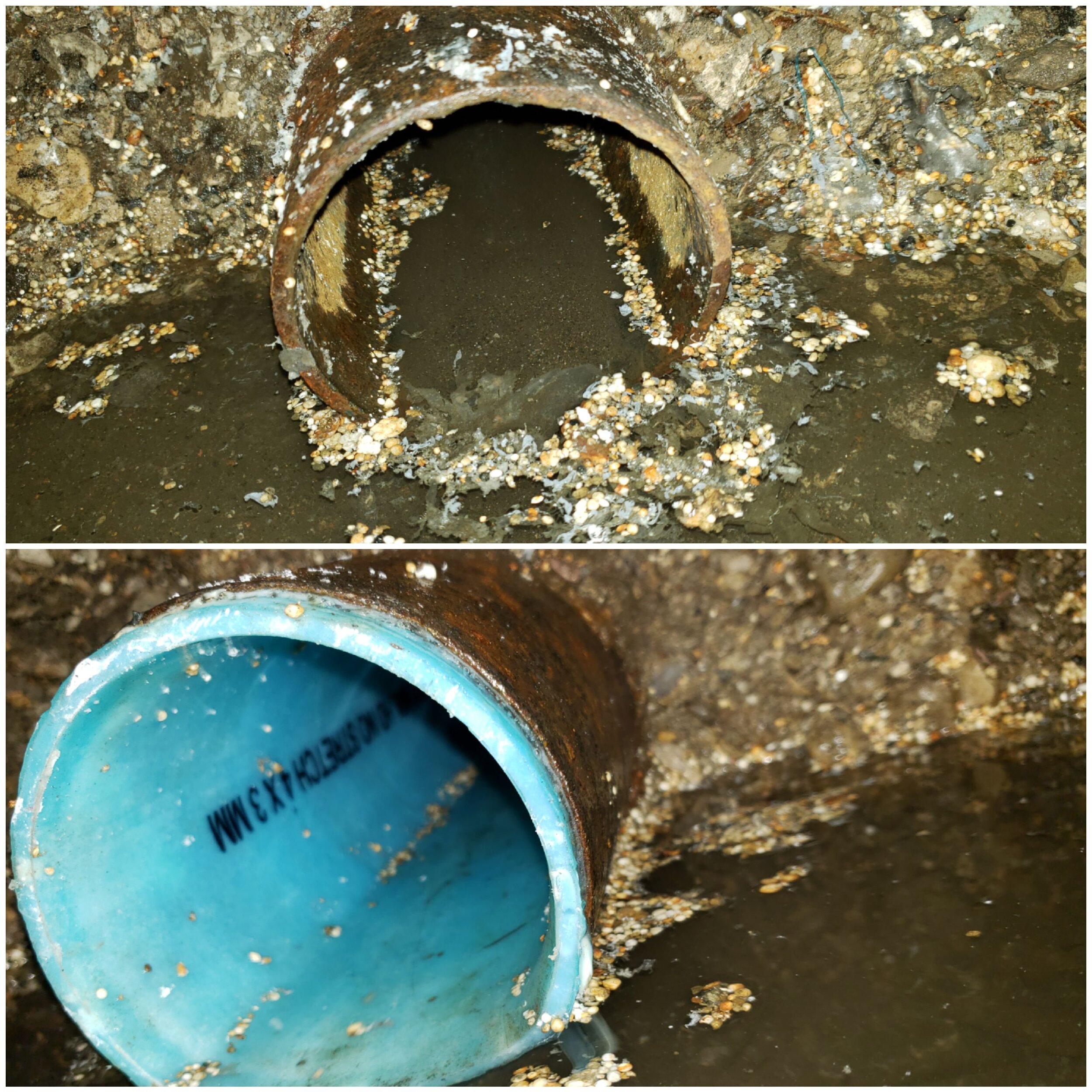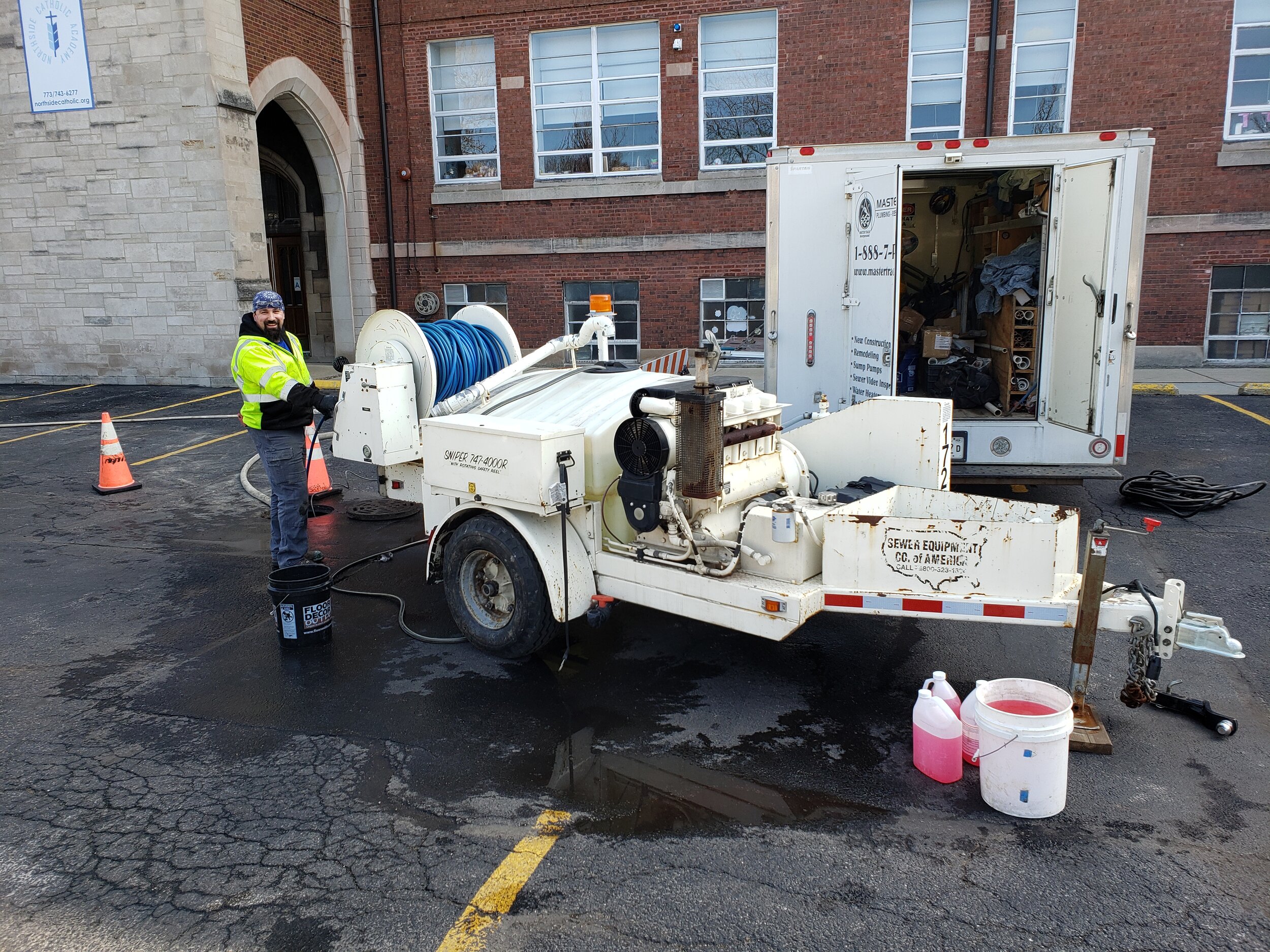The Top 5 Sewer Line Problems and What to Do About Them
1. Roots infiltrating the pipe
This is a very common problem and hard to avoid with old clay pipes running underground. A good way to deal with this issue is with a once or twice per year checkup and maintenance of the pipes. Rodding and hydro-jetting can clear the lines temporarily.
For a permanent solution to this problem, we recommend pipe and sewer lining. Lining is a minimally invasive, cost-effective, and environmentally friendly technique that allows the rehabilitation of existing drain pipes without having to tear out and replace them conventionally. Pipe Lining is accomplished by inserting an epoxy saturated felt tube into the pipe, inflating it, and letting it cure in place. After the liner has cured, the result is a brand new pipe within the old pipe. This new inner-pipe has a 50-year use expectancy - that’s almost double the life of cast-iron.
Before-and-After comparison of a lined sewer pipe
2. Broken or collapsed pipe
Another inevitable occurrence with old underground pipes is that over time they collapse or break. Regular maintenance can uncover these problems before they turn into big messes. Physical repair of the broken section of pipe is one solution, but if possible, the best thing to do is pipe and sewer lining.
3. Back-pitched pipes
Faulty installation or settling of pipes over time can lead to them to slant downward. This results in collection of debris that won’t allow normal flow through the pipe. Upon diagnosis of this common problem, the best thing to do is have the pipes physically removed and replaced with proper pitch.
4. Flushing things down the toilet
Paper towels, tissues, wipes, feminine care products, even hair - NONE of these things belongs in the toilet. Many people have an instinct that once something gets flushed, it disappears in a magical way. That’s a dangerous myth. Only body waste and toilet paper, which is specially designed to dissolve in water, should be flushed down the toilet. Otherwise, foreign objects will eventually block the sewer line and toilets will overflow into the house. Nobody likes the idea of that happening.
If necessary, keep non-flushable materials out of the bathroom entirely. And if there are young kids at home, be sure to warn them about dropping toys into the toilet. It’s all fun and games until somebody has to deal with a flooded bathroom.
5. Grease build-up over time
This is a very common issue that happens in restaurants and other commercial establishments. Grease from food and mechanical waste doesn’t dissolve; instead, it collects and hardens inside pipes creating a major blockage that won’t allow water to flow properly. Annual (or more frequent, if necessary) hydro-jetting is the solution to this problem. Hydro-jetting (also referred to as jetting), is a process for clearing build-up and clogs by driving water at high-pressure into the pipe, thereby dissolving and and pushing the debris through.
Hydro-jetter in action at job site
Master Trade is equipped and experienced in various specialized solutions for clearing blocked lines and repairing pipes. Contact us to discuss what service we can provide that best suits your plumbing needs.


